Human Wave sacrifice for blue map in Kharkov, Ukrainian failure still fait accompli, and how criterion for a good result likely to have been satisfied
Although it is highly unfashionable, there is no marvelling in these parts for the so-called achievements of the Ukrainians in Kharkov this week. Blunt, primitive, strategically blundering, and not mindful of the waste of potential by which an advantage to be gained is lost, it was a dumb rush-and-push in concert with a vehement and malicious social media campaign for the sake of giving the appearance of being war-capable. Indeed, now that the Russian MoD has announced that a decision had been taken to regroup forces from the theatre even in the first day (if not hours) of the Ukrainian initiative, one is left to wonder if the Ukrainians were spared a blow worse than they’d received. In three days, said the Russian MoD (on 10th September), “more than 2,000 Ukrainian and foreign fighters, as well as over 100 pieces of armoured vehicles and artillery” had been destroyed. However, for some supposed pro-Russian social media OSINT-mongers – of whom nearly all are giving the outward aspect of being deflated and consequently critical – it is Russia that is making too much of a sacrifice, and that the territory that Kiev will now control – or at least claim to – is more important†. But the reduction of Ukrainian military capability (including everything that NATO cares to set before the Russians in the guise of being such) is one of the objectives of the Special Military Operation. It’s all about the army, not the field of where it is destroyed – within acceptable parameters, but in that respect, conceding some ground in Kharkov is not a big issue.
As far as the author can make out, the main Ukrainian force consisted of a mechanised element that came racing up from Andriivka towards Balakliya, while support infantry launched from fields north west of the town. An attack on Balakliya was stopped, and the Russians continued to hold the eastern part long into the fight, and in doing so controlled the exit to the said northern route. “Pro-Russian” OSINT-mongers, as one might expect, published accounts of the town being captured. In fact, the Ukrainians had to roll past Balakliya, and gain the road by inserting themselves through Russian lines in a narrow front somewhere within a range of 20 miles north of the settlement. Reports came in that the Ukrainians had progressed to Volokhiv Yar, a settlement north-east along said road, and then Shevchekove, a settlement again in the north easterly direction. Reports indicate that there was no Russian presence at Volokhiv Yar to offer resistance, but the Ukrainians were blocked at Shevchekove. The Ukrainians had to roll past this settlement without capturing it to progress eastwards to Kupyansk on the banks of the broad river Oskil. It appears that despite claims to the contrary, the Ukrainians had tremendous difficulty at Shevchekove, and couldn’t progress into Kupyansk until the Russians were ready to move to their new defensive positions in the town on the eastern bank.
The extent of the width of the salient that the Ukrainians created behind its sprinting spearhead is unknown. The liveuamap.com map shown immediately below (showing the situation on 9th September) possibly presents it something like its true limited nature, although the also Ukrainian-friendly Rybar quite unsurprisingly published a very generous bulge from Balakliya as far north as Shevchekove. However, the truth of the matter was likely betrayed in a statement by the Deputy Minister of Defence of Ukraine who had to warn that information circulating on social media regarding settlements allegedly captured by Ukraine was wildly exaggerated.
This is not to say that the Ukrainian action was not big – which is a very different thing to being expansive. It appears to have been a dumb rush, with its lead element perhaps aiming to delay anticipated Russian reinforcements by blocking Oskil River crossings, with the follow-up designed to mop up against the outnumbered Russians to the east. While blue map is in itself its own reward for the Ukrainians, the author is sure that they will be sorely disappointed that they didn’t rout the Russians westwards, nor even successfully trap them.
That the Russian withdrew in good order, with reinforcements (not having been present before – we could conclude – so as not to dissuade the Ukrainians from taking the bait) arriving suspiciously just in time to help effect it, is a clue that the Russian withdrawal could even have been a thing pre-planned and triggered by the Ukrainian assault. Stories of a second Ukrainian movement that was looking to isolate Izyum look like they were only that, and it’s not obvious that by withdrawing the Russians were reacting to avoid being outmanoeuvred. Indeed, reports have it that the Russians were in Izyum till the last.
It appears that the new front line is generally described by the Oskil down to the western border of the territory of Donetsk, with the Russians having retreated back over the border elsewhere in Kharkov, taking the civilians who want to leave with them. The map immediately above, taken from liveuamap on the 11th, gives an adequate idea.
As for the Ukrainians, they have new problems, not least that they very early on had to commit their reserves to their expensive Human Wave attack. It is a hugely fascinating subject to be touched on in the next section of this piece which, having provided a summary, will now relate to events in terms of reference to issues raised in recent (and not so new) FBEL articles.
Mention was made, above, of criticism of the withdrawal of Russian forces by so-called pro-Russian OSINT-mongers, and a piece that the author saw and particularly struck him went along these lines: Kharkov could have been defended if it weren’t for structural problems in Russian military leadership. From the same was the criticism that some more infantry would have enabled the Russians from retiring from Kharkov. The inference is that the Russians have limited themselves by their definitions for their conduct in Ukraine.
For his part, the author almost despairs that the social media account which published this guff in the guise of making expert comment (and there’s no need to name names because English-speaking pro-Russian social and alternative media is almost universally garbage) could be blessed with nearly 200 thousand followers. When this sort of thing, which is clearly dishonest and subversive, comes from people who are routinely alarmist (every single Ukrainian act is a huge problem for Russia), what sort of idiot do you need to be to subscribe to have it posted on a feed?
But of course, the real culprit in all this is bad alternative media – which is the rule, possibly without any exceptions – that is caught up in its own crap-expert delusion. Of course, being a component of Mi7 (or the American equivalent) doesn’t help. Here’s a great example: a so-called military expert (“ex”-CIA) who claimed that Russia had counter-attacked the Ukrainians at Kharkov. It’s wrong. But consequently the alternative media audience is made a little bit more know-it-all and know-nothing, and they empower social media influencers (propagandists) because they can’t detect being led by the nose.
Naturally, this was leading to the delving into previous FBEL material as promised, because this is where some reading and thinking can act as priming against brand name “expertise”.
Try this idea: the Russians were perfectly capable of defending Kharkov but didn’t want to. Try this: Russia had deployed a perfectly adequate force to deal with the Ukrainians, but the greater plan didn’t call for a defence of the territory. After all, how does online “expertise” have the first real notion of Russian military dispositions that they should be gobbing off about them when they think they’re not to their liking? Does online “expertise” have any real insight into how a defence of Kharkov affects an overall operational level dynamic, regardless of how many troops are ascribed to the project?
It’s more useful and constructive to compare and contrast Kharkov with Kherson, where a decision had been taken not to allow the Ukrainians to pass – which was the only difference between the two in terms of Russian conduct, and in fact in terms of results. The fact that the Ukrainian casualty rate at Kharkov may well outstrip the one at Kherson testifies to it. In an update of Sunday 11th, the Russian MoD has said that between the 6th and 10th of September, in the south and east of Ukraine, 4,000 Ukrainian troops had been killed, and 8,000 injured. The lion’s share of these has to be from Kharkov. Indeed, as the whole picture has now presented itself, one can see clarification of a Russian success, on their terms, in Kharkov – just as there was in Kherson.
So, the direction of this discussion must inevitably turn to how the Russians can realise the same success in two scenarios with outcomes, on the surface at least, so very dissimilar. In short, the answer is Russian artillery superiority irrespectively – and massed infantry is not a consideration.
In the FBEL article, The Ukrainian Kherson Counteroffensive That Was Over Before It Began, Or Never Was – Again, there is commentary about the defensive application of the Russian artillery military doctrine. The first point made there to revisit is this:
The Russian capability that renders the Ukrainians doomed to destruction, the ability to generate a screen of artillery fire… has now clearly been demonstrated in this incident.
The said article provides another link to the first and informing piece that appeared at FBEL regarding Russian artillery doctrine, and the reader might take the opportunity to follow it if he hasn’t already looked at the piece. Either way, none other than The Washington Post, even against its bias, last week provided verification when it gathered comment from Ukrainians who had borne the brunt of Russian artillery:
Oleksandr said the Russian artillery fire was relentless. “They were just hitting us all the time,” he said. “If we fire three mortars, they fire 20 in return.”
And although the following extract suggests that all the Ukraine needs is more artillery, at the same time it unwittingly talks about how it wouldn’t make any difference anyway:
The soldiers said they lacked the artillery needed to dislodge Russia’s entrenched forces and described a yawning technology gap with their better-equipped adversaries.
When the Post then goes on to explain an array of Russian technology, what it is describing is part and parcel of the integrated system by which the artillery, already disproportionate, is made unerringly efficient, and thus devastating.
Another insight shared in aforementioned FBEL piece was this:
The settlements that Ukrainian forces were said to have occupied were not very likely to have had Russians forces present – but they would have been under the screen of Russian artillery. It stands to reason, then, that close engagement between the forces is not necessarily required when the Russians have thusly adopted a defensive posture, and it is the might of stand-off firepower that forces the Ukrainians to bend to the Russian will.
We have now seen this borne out in practise in the Kharkov theatre where the Russians vacated the ground ahead of the Ukrainians (with some remaining to fight a rear-guard action), and it’s just not safe to say that Russia did not have had adequate rifle or tank elements (of brigades which are comprised mostly of artillery to the rear) to block the Ukrainians. What there was, quite evidently, was ample artillery to rip the Ukrainians to shreds – and we might wonder just how much of it was actually already located east of the Oskil so that it could fire uninterruptedly without the bother of repositioning.
If one has a good think about this, the idea must occur that Russia’s greatest concern was probably that the Ukrainians could produce something that might interfere with their mobility and risk their forward elements being trapped on the wrong side of the Oskil. There’s no doubt in the author’s mind that the Russians must have had some idea about Ukrainian preparations, and were always doing the calculus. When a tipping point had been reached regarding how much the field would fill with Ukrainian army and how quickly, a decision was probably made to expect an assault, and set it as a trigger to retreat. At least, this is what the author suspects.
And what we can take from the information garnered from the Ukrainian soldiers at Kherson is that the UK/US planners who are undoubtedly organising these initiatives haven’t realised that they are fighting a new type of war that they aren’t suited to. In their calculations, they outnumbered the Russians in their forward areas, and that presented an opportunity for a dumb rush – which was not counter attacked, as insisted above, so as to cause a great number of casualties, but instead invited upon itself the inevitable consequence of moving in the open under the Russian artillery screen.
Seeing as the discussion has turned to the UK/US perspective, it becomes time to understand “Ukrainian” motivation. That there is a psychological operation underway to create the impression of a great wave of Ukrainian momentum in the whole conflict is perceptible if one has eyes to see. The project clearly involves creating blue map. This, the author suggests, is intended to instil panic in the Russian ranks, and encourage Russian dissidents to make political changes – and this is the miracle that the US/UK is still hoping for as a kind of Deus ex machina intervention to prevent the loss of their interests in Ukraine. Unfortunately for the US/UK, the project has failed because the wing of the Ukrainian phoenix in Kherson didn’t grow any feathers and was barbequed, and the Russians clipped the one that was to extend in Kharkov.
Until the events in Kharkov, the Ukrainians had been reduced to constructing their re-conquest of territory from the Russians – blue map – by inventing it. The issue is explored further in the FBEL article, A Conquest At Vysokopillya By Legerdemain: The Ukrainian Virtual “Kherson Counteroffensive” In A Nutshell, and the picture of how all Ukrainian retakes in Kherson have been fabricated is made complete in a piece called The Theatre On The Banks Of The Ingulets.
The genesis of blue map in Kharkov is another matter, of course, but it isn’t straight forward. Before the Russians surprised the author and effected a retreat, it was thought that what was going to take shape was a mini “ISIS in Iraq and Syria” situation‡. With its allegedly being led at the tip of the spear by serving personnel from certain national armies and in particular their special forces (reports abounded of Britons and Americans too young to be mercenaries), it looked like ISIS over again. That it was weaving along the roads and looking like it wanted to fill the spaces between settlements where Russian were located and couldn’t necessarily be dislodged (but could be besieged), it looked like ISIS over again. A full comparison is for a dissertation: the essential thing to convey is how the author conceives that it is quite possible that the intention for the initiative in Kharkov was to create a great shock with Russian steadiness appearing to be upset by attacks in many places all at once: to create a picture of distended destabilisation, and actually to make it real. Then, if Russians could be trapped, and prevented from being reinforced and resupplied, then there would images on the news channels in every nation of Russians being taken prisoner in substantial numbers. Or they would be dead.
As we now know, the Russians made sure that none of this could transpire – and in doing so saddled Kiev with longer supply lines over open country at greater risk from Russian aerial attack, not to mention the actual border with Russia to guard – which (just by sight) appears to have made the line of contact longer. What one can definitely say about the new divider is that it is securer for Russia. Ukraine, on the other hand, least able to afford such weakness because of its carelessness with manpower, no longer has the forests around Kharkov for cover. Indeed, the country of the west bank of the Oskil is considerably more transparent in its nature. All in all, Kiev has awarded itself more vulnerability.
To round this off, there’s a matter to deal with as suggested by the headline, and it relates to the risks that all personnel on the anti-Russian axis expose themselves to when they participate in a Human Wave against Russian artillery. The following extract from a piece published at FBEL in March will be enough said, except in quick addition, whether or not there has been satisfaction is something that we will never hear news of:
With two issues of UK Government mendacity in direct relation to the ongoing Russian military mission in Ukraine then raised, please allow the author to declare his interest. UK Government is a scourge on the people of Britain, but remains able to squat in its misrule by the art of government-by-hoax, where everything is done at all times to deceive otherwise lawfully unobligated people to volunteer into being governed in such a way that is detrimental to them, but beneficial to a criminal oligarchy. As such, if the Russians kill UK agents of tyranny – Krypteia – in Ukraine, it potentially translates to lessening of function to control Britons in their own country, and it is self-evidently a matter of supreme interest to a community that looks to be rid of such a blight.
† Part of this complaint is to do with the supposed abandonment of Kharkov civilians left behind to be accused of collaboration with the Russians by vengeful Ukrainian forces. At this stage, these stories of persecution should be taken with a pinch of salt, because evacuation from this area has evidently been going on for a long time. Indeed, it is prime material for subversive manipulation looking to incite division, and the author is not surprised to see it appearing as a talking point in works of the supposedly unmatched giants of alternative media geopolitical analysis. In many ways it’s predictable, and astonishing how the audience cannot cotton on.
‡ See:
Targeting Assad Through The Islamic State: The Great Hoax Of 2014 (link)
“Our Boys” Are ISIS: The RAF And The SAS At War With The Syrians (link)
War Criminals Get A Taste Of Their Syrian Medicine; SAS In The Desert Pocket? (SAS)
For Those Who Have Not Yet Realised: Big Psyop Happening In Syria Right Now (link)




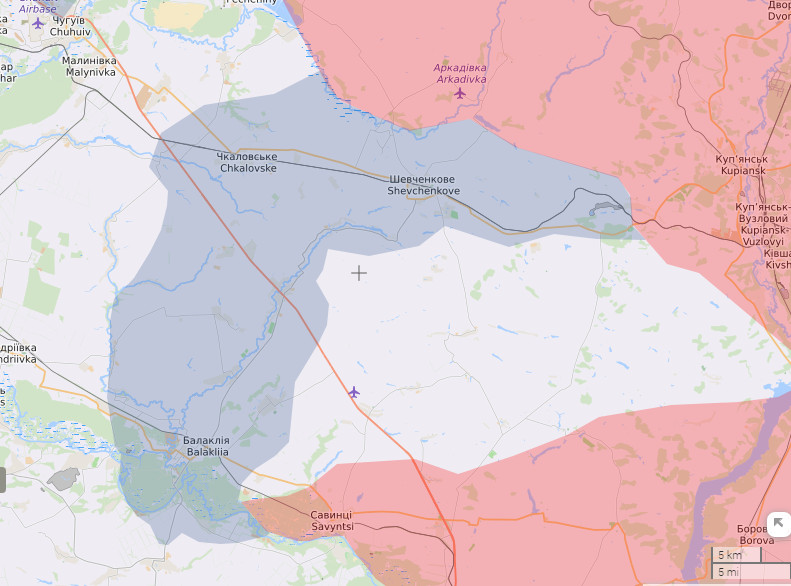
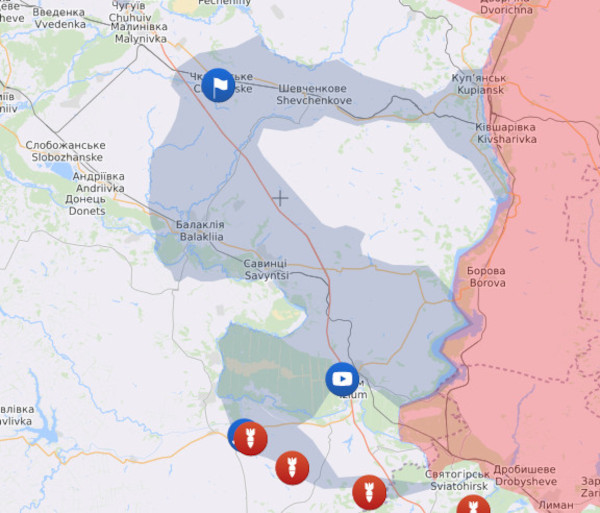

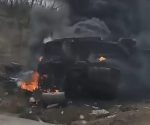
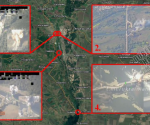
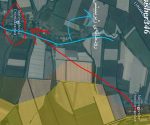











The former CIA commentator you mention is likely Scott Ritter. I found it hilarious that he did a piece trying to postulate about where the totally fake missile attack on Kramatorsk train station had come from. South Front also seems to be completely controlled opposition.
I have spoken to some Ukrainians in Europe. None had seen any actual artillery or missile attacks. They were from near Odessa though, away from where any actual fighting might have been.
I wasn’t talking about Ritter, but he’s another one. I sussed him from what he was saying the first time I heard it: I don’t remember it exactly, but his role in the defeat of the evil Saddam Hussein was the impression I got. I didn’t take any notice of that Kramatorsk thing you mention.